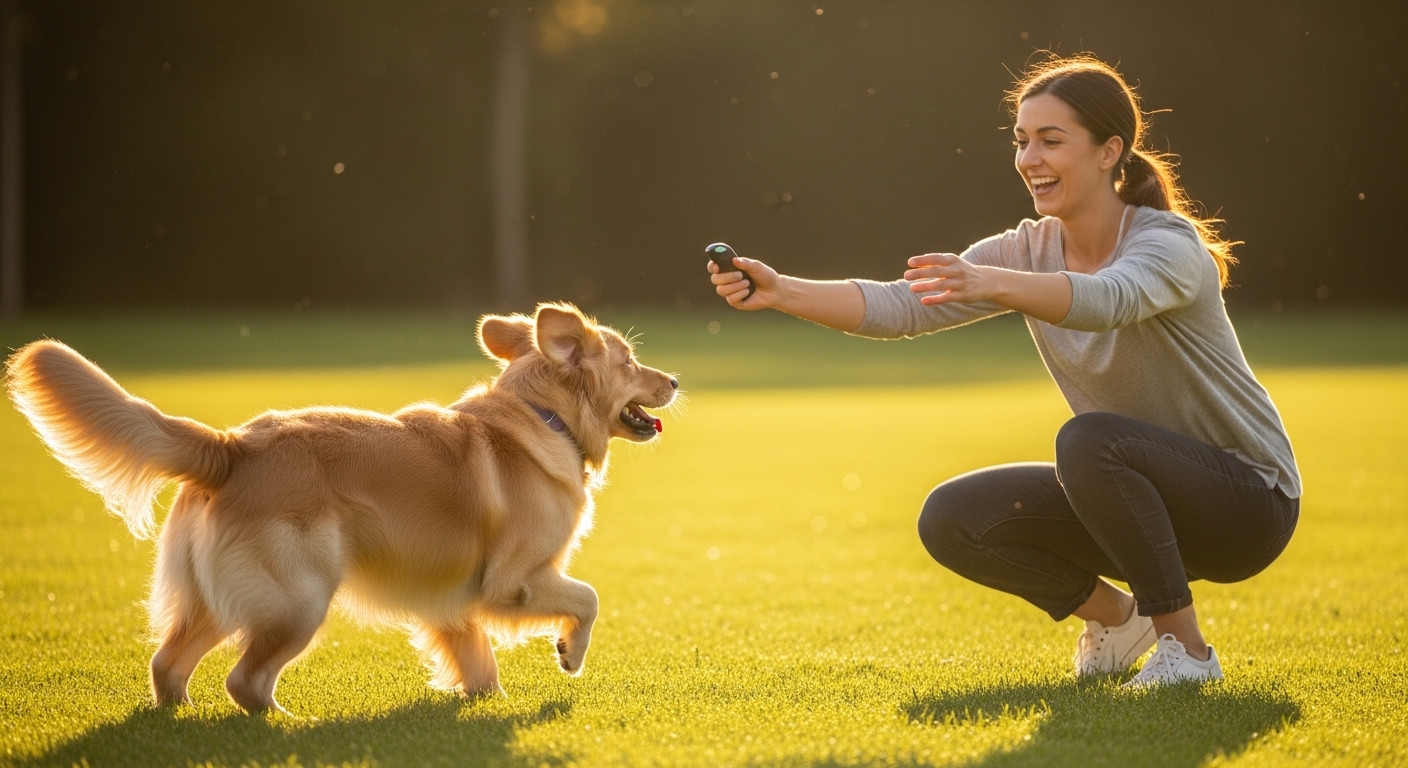A rock-solid “come” can be a lifesaver—literally—whether you’re at the dog park, on a hike, or enjoying backyard freedom. With patience, consistency, and these positive-reinforcement strategies, your pup will learn that returning to you is the best choice every time. Let’s build that unbreakable recall bond!
1. Why Recall Is Crucial
- Safety First: Protects your dog from cars, wildlife, or dangerous situations.
- Enhanced Freedom: Reliable recall means you can safely grant more off-leash adventures.
- Strengthens Trust: Your dog learns you’re a source of fun and rewards, not just commands.
2. Tools & Treats for Success
- High-Value Treats: Small, soft, super-tasty bites (cheese, chicken, freeze-dried liver).
- Long Line (15–30 ft): Gives freedom while maintaining control in early stages.
- Clicker or Marker Word: A crisp “Yes!” or click pinpoints the exact moment of success.
- Exciting Toys: A favorite squeaky or ball for play-based reinforcement.
- Quiet Training Area: Few distractions to set your dog up for early wins.
3. Step-by-Step Recall Training
🐾 Stage 1: Foundation Indoors
- Short Distance Calls: In a hallway, crouch down, show a treat, and cheerfully say “Come!”
- Mark & Reward: The instant your dog steps toward you, click and lavish praise + treat at your feet.
- Repeat & Fade Lure: Gradually shift from showing the treat to simply calling, then rewarding.
🐾 Stage 2: Add Distance & Distraction
- Long Line Introduction: Clip the line on and move a few paces away. Call “Come!”
- Play Reward: After treat, immediately toss a ball or tug toy to keep enthusiasm high.
- Vary Rewards: Mix up treats and toys so recall is always exciting and unpredictable.
🐾 Stage 3: Outdoors with Real-World Distractions
- Low-Distraction Park: Begin in a quiet green space. Practice 5 ft, then 10 ft, then 20 ft.
- High-Value Surprises: Occasionally hide a jackpot treat (e.g., hot dog piece) to keep your dog on their toes.
- Random Calls: Call your dog during play—never overuse “Come!” only to end play. Always reward and then release back to fun.
4. Troubleshooting Common Hurdles
🐾 Dog Ignores When Busy
- Make Yourself Irresistible: Lower your body, clap hands, use an excited voice.
- Regain Focus: Drop treats along the path back to you to guide their attention.
🐾 “Come” Means End of Fun
- Play Release Word: Teach “Okay!” or “Go Play!” so your dog knows recall leads to more fun, not the end.
- Intermittent Rewards: Sometimes reward with play instead of treats to keep motivation balanced.
🐾 Recall Fails Around Other Dogs
- Distance Shield: Start at a distance where other dogs are barely visible. Reward calm focus.
- Parallel Recall: Stand with another handler and dog; both call their dogs alternately—reward for coming despite social distraction.
5. Maintaining & Generalizing Recall
- Random Practice: Call your dog at mealtimes, before walks, or during everyday activities.
- Proofing: Practice recall on different surfaces (grass, gravel, sand), and in various weather conditions.
- Fade Lure & Treat Frequency: Gradually reduce visible treats; reward intermittently to sustain reliability.
6. Beyond Recall: Building a Bond
- Daily Enrichment: Incorporate nose-work games, puzzle toys, and “find it” drills to keep your dog mentally sharp.
- Quality Time: Short training sessions (5–10 minutes), sprinkled throughout the day, reinforce learning and strengthen your connection.

